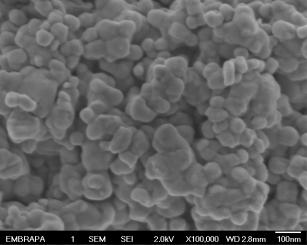Development of nanoparticles from Agaricus brasiliensis exopolysaccharide to use as vaccinal adjuvant
Development of nanoparticles from Agaricus brasiliensis exopolysaccharide to use as vaccinal adjuvant

Photo: Brandão, Humberto
Vaccination of animals as a method of controlling infectious diseases has been practiced for more than a century with remarkable success. The demand for more effective vaccines tends to grow as an alternative to the use of medicines and as a way to increase animal productivity, contribute to food safety and promote animal and human health. In addition, by minimizing the need for pharmacological interventions, the reduction of drug residues in the environment and in food is favored. As the use of antibiotics and antiparasitics is kept down, there may be a decrease in the selection of pathogen and parasite strains resistant to the medicines available in the market. However, many vaccines do not have satisfactory efficiency, and some are not as safe because they use an attenuated form of the pathogen, which is not inactivated. For some diseases there is still a lack of effective vaccines, mainly because these vaccines cannot stimulate the immune response necessary for adequate protection of the herds. In view of the need to improve existing vaccines and the perspective of developing new vaccine formulations and immunization strategies, it is necessary to search for alternative and equally novel options in this area. In this context, nanotechnology emerges as a branch of science that can allow technological solutions, such as increasing the immunogenicity of vaccines and directing the immune response. The rich Brazilian biodiversity has several raw materials to provide the construction of new nanostructures. The polysaccharides produced by fungi can be a promising source of these raw materials, since they have characteristics that enable their use in the formation of nanostructures applicable in vaccine formulations, since they have biological properties such as immunostimulation. This project aims at the prospecting of exopolysaccharides (EPS) produced by the mushroom Agaricus brasiliensis for the synthesis of a nanoparticle that encapsulates a model protein, in this case the Shiga toxin, an endotoxin produced by some strains of Escherichia coli that causes diarrhea in cattle and consequently, damage in the dairy chain. In vitro and in vivo tests are underway to evaluate the potential immunostimulation property of this nanoparticle and its possible toxicity. As a potential impact, this nanoparticle is expected to have immunostimulatory properties and capability to direct the immune response, thus being suitable to further use in the manufacture of new vaccines for cattle and other animals of interest.
Ecosystem: Amazonic, Coastal Areas, Campinaranas, Extreme South, Atlantic Forest, Semi-mixed and seasonal forests, Mid-North, Pantanal, Caatinga Region and Mixed forests, Cerrados Region, Pinheirais Region, Ecological Transition
Status: Completed Start date: Wed Feb 01 00:00:00 GMT-03:00 2017 Conclusion date: Thu Jan 31 00:00:00 GMT-03:00 2019
Head Unit: Embrapa Dairy Cattle
Project leader: Juliana Carine Gern
Contact: juliana.gern@embrapa.br
Keywords: exopolissacarídeo, nanopartícula, adjuvante vacina
